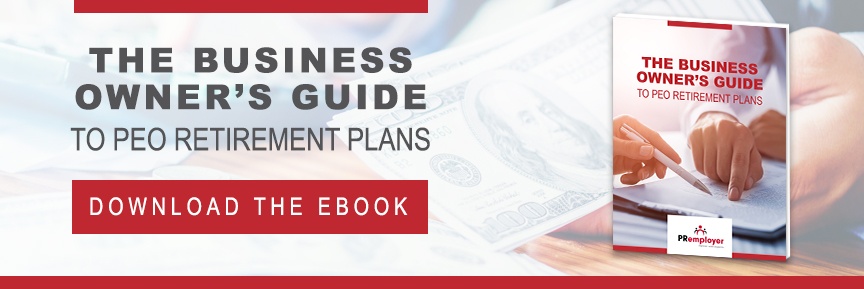%20Retirement%20Plan.jpg?width=2121&name=The%20Real%20Cost%20of%20Your%20401(k)%20Retirement%20Plan.jpg)
In order to acquire top-notch talent in your industry, a quality retirement savings plan is essential. Many qualified candidates will expect a 401(k) as part of an attractive benefits package. Sponsoring retirement plans, however, presents both clear and hidden costs for the employer in terms of time, money, and other resources.Although these 401(k) costs don’t negate the need to offer a top-notch plan, being aware of them allows you to properly evaluate if you are offering a quality yet affordable retirement plan option to your employees. Here is a look at some of the main costs associated with retirement plans:
1. Administrative Fees
The U.S. Department of Labor classifies 401(k) fees into three main categories: plan administration fees; investment fees; and individual service fees. Plan administration fees are used to cover the costs of basic services associated with operating the 401(k) plan, such as accounting, recordkeeping, and legal and trustee services. They can be charged directly against the assets of the plan and allocated among the plan participants, or they may be borne entirely by the employer, according to an article on MarketWatch. Other times, administrative fees are covered by the investment fees deducted from investment returns.
The most prominent fees and expenses are those associated with managing plan investments. They are usually assessed as a percentage of invested assets, according to the Labor Department. Finally, 401(k) plans also can include optional features that bear an individual service fee such as transactions, loans, or investment advice.
Taken together, these fees can add up, especially depending on the number of employees utilizing the plan and the structure you’ve selected.
2. Time
The unfortunate reality is that your 401(k) plan doesn’t run on autopilot. Plan sponsors have to continually dedicate ample amounts of time to managing the plan, performing required audits, and complying with applicable laws and regulations. As the fiduciary, employers have to perform a variety of responsibilities to administer the plan, including monitoring plan expenses, acquiring legal services, recordkeeping, customer support, and processing transactions. Especially for small- to medium-sized businesses, these tasks can put an immense strain on their human resources team, preventing them from devoting time and focus to other activities critical to business growth.
Plans also come with individual auditing requirements. For instance, if your company employs more than 100 eligible plan participants, you will be subject to an annual audit that must be performed by an outside accounting firm. You bear the cost of the external audit, and it can take up to six weeks to complete. If you fail to do so or don’t meet a certain deadline, you could be charged hefty penalties by the Internal Revenue Service (IRS).
Another area that can drain your time is compliance. You have to make sure all aspects of your 401(k) plan adhere to state and federal laws. This not only applies when you initially set up the plan, but companies also must perform yearly reviews to ensure their plan is being administered and operated according to legal stipulations. As with auditing, you can be charged fines or even lose your plan’s tax-exempt status if you fail to comply with governance requirements.
3. Personal Risk
As the plan sponsor, you have fiduciary liability as dictated by the Employee Retirement Income Security Act (ERISA), and this comes with a high level of responsibility and accountability. The fiduciary responsibilities that you must assume include:
- Depositing employee contributions on time;
- Maintaining adequate ERISA fidelity bond coverage;
- Using plan assets only to cover reasonable expenses; and
- Selecting qualified services providers to monitor the retirement savings plan.
The consequence of not fulfilling these responsibilities is personal liability risk. Employers can be subject to lawsuits and other serious repercussions for errors and discrepancies.
Hiring a PEO to Mitigate Costs
Partnering with a PEO like PRemployer to administer your 401(k) plan can be a valuable cost-saving measure, in terms of both time and money. Not only will PRemployer handle the routine yet time-consuming tasks associated with managing retirement savings, but they also can ensure compliance and assume liability, giving you peace of mind that the plan you are offering to employees won’t put your business at risk.

%20Retirement%20Plan.jpg)